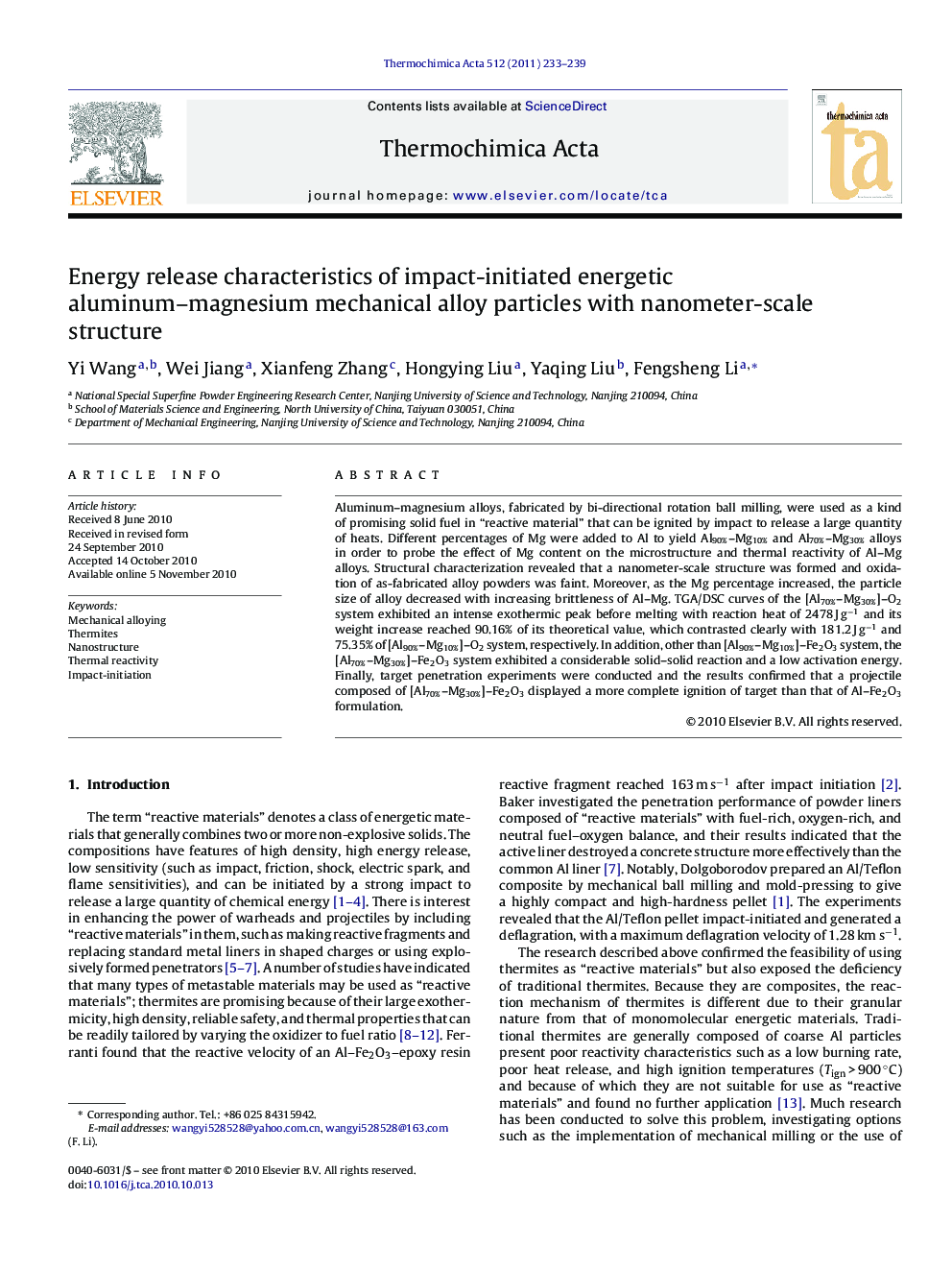| Article ID | Journal | Published Year | Pages | File Type |
|---|---|---|---|---|
| 674691 | Thermochimica Acta | 2011 | 7 Pages |
Abstract
Aluminum-magnesium alloys, fabricated by bi-directional rotation ball milling, were used as a kind of promising solid fuel in “reactive material” that can be ignited by impact to release a large quantity of heats. Different percentages of Mg were added to Al to yield Al90%-Mg10% and Al70%-Mg30% alloys in order to probe the effect of Mg content on the microstructure and thermal reactivity of Al-Mg alloys. Structural characterization revealed that a nanometer-scale structure was formed and oxidation of as-fabricated alloy powders was faint. Moreover, as the Mg percentage increased, the particle size of alloy decreased with increasing brittleness of Al-Mg. TGA/DSC curves of the [Al70%-Mg30%]-O2 system exhibited an intense exothermic peak before melting with reaction heat of 2478Â JÂ gâ1 and its weight increase reached 90.16% of its theoretical value, which contrasted clearly with 181.2Â JÂ gâ1 and 75.35% of [Al90%-Mg10%]-O2 system, respectively. In addition, other than [Al90%-Mg10%]-Fe2O3 system, the [Al70%-Mg30%]-Fe2O3 system exhibited a considerable solid-solid reaction and a low activation energy. Finally, target penetration experiments were conducted and the results confirmed that a projectile composed of [Al70%-Mg30%]-Fe2O3 displayed a more complete ignition of target than that of Al-Fe2O3 formulation.
Related Topics
Physical Sciences and Engineering
Chemical Engineering
Fluid Flow and Transfer Processes
Authors
Yi Wang, Wei Jiang, Xianfeng Zhang, Hongying Liu, Yaqing Liu, Fengsheng Li,
